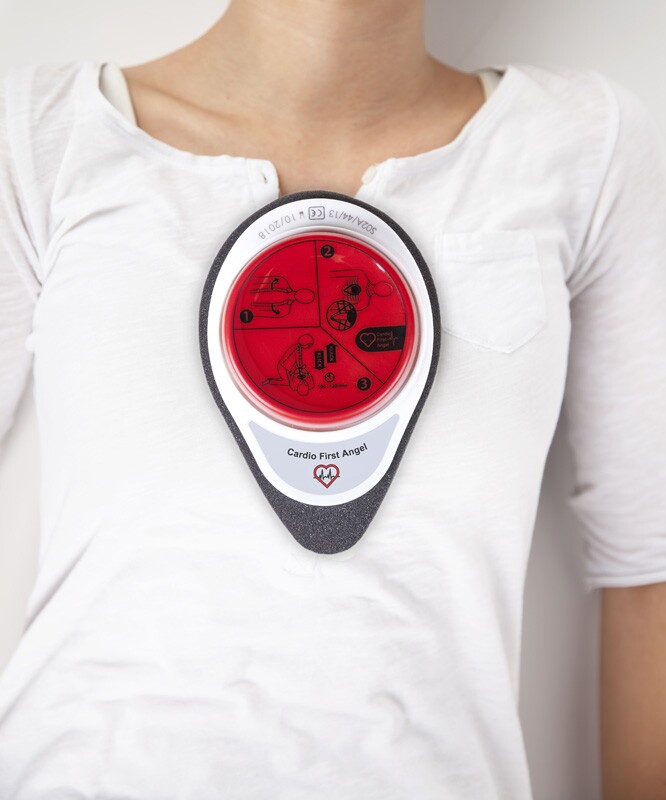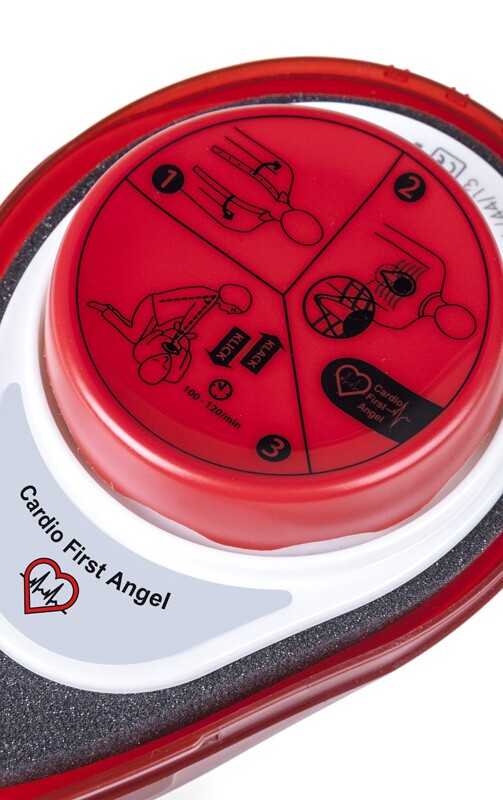Performing cardiopulmonary resuscitation (CPR) in the first 15 minutes following a heart attack can be a literal lifesaver, greatly increasing the victim's chances of survival. However, many people aren't trained in CPR and even those who are can be hesitant to step up in the vital first minutes that can mean the difference between life and death. The Cardio First Angel CPR coach is a simple mechanical device that guides even an untrained person in properly administering CPR.
Though CPR may not be enough to restart a stopped heart, it can keep blood flowing to the brain and other organs to hold off death and prevent irreversible damage until medical help can arrive. The form of CPR most familiar to the public is the conventional compression/resuscitation method where the practitioner alternates between pressing on the patient’s chest and breathing air into the lungs. It works, but it requires training and a bit of practice on medical dummies to learn to do it effectively.
The other method, preferred by the American Heart Association for adult patients, is the compression-only method, where the practitioner continually presses on the patient’s chest at 100 to 120 compressions per minute. The idea is that it’s much more important to keep the blood circulating through the body than ventilating the lungs, and that it’s much easier to learn.

The only problem is that for the inexperienced practitioner or someone whose knowledge of the method comes from a first-aid pamphlet, compression-only is still daunting and can result in hesitation during the first couple of minutes when help is most needed. Built by Cardio First Angel International Group, Munich, the Cardio First Angel is designed to reduce or eliminate that moment of hesitation.
The way the Cardio First Angel works is very simple. The 130-g (4.5-oz) device is removed from its plastic case. On top of the device is just what you want on a medical emergency device; a large, red button with instructions printed right on it. After calling emergency services, the practitioner is instructed to put the foam-backed device in place, so the point of its oval shape is resting on the base of the sternum.

The practitioner then places the heels of his hands on the button and presses down in a rocking motion indicated by the illustration at a rate of 100-120 beats per minute. The spring in the button makes a loud click when 41 kg (90 lb) of pressure is applied and a loud clack when springing back, to ensure the patient receives optimal compression pressure. The timing of these two sounds helps the operator to keep the proper rhythm until professional help arrives.
The video below explains the Cardio First Angel (in German).
Source: Cardio First Angel via The Red Ferret









